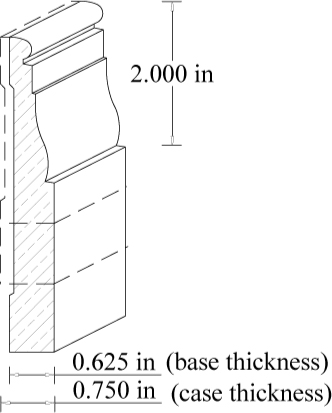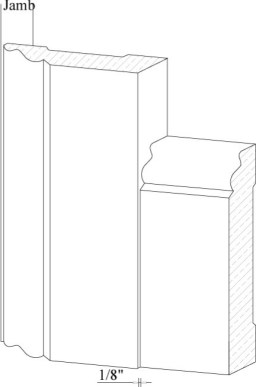How to determine width and thickness of case and base moulding
Wood trim mouldings are an essential element in enhancing the aesthetic appeal and adding a finishing touch to any interior or exterior space. Whether you’re renovating a room or embarking on a new construction project, selecting the right wood trim moulding sizes is crucial for achieving a cohesive and visually pleasing design. Determining the appropriate dimensions of wood trim mouldings involves considering various factors such as the room’s proportions, architectural style, and personal preferences.

You have the freedom to choose the width of a base or case moulding beyond the profile width (in this case, 2 inches). Let’s say you initially want the casing to be 3/4 inch by 2-1/2 inches. To visualize this, imagine a dashed line representing this width. However, upon seeing the 2-1/2 inch width, you realize that you actually prefer a width of 3-1/4″ inches, so you visualize a second dashed line representing this new width of 3-1/4″ inches, so you visualize a second dashed line representing this new width. It’s important to note that in both examples, the profile width remains constant at 2 inches, while the width of the flat area varies.

When possible the base will be 1/8″ thinner than the casing to allow for a good fit at doorways. This eliminates a visible line when drywall and jamb don’t match perfectly.
